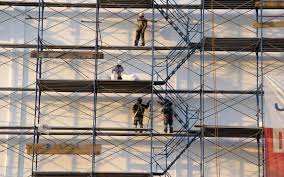Dec . 01, 2024 13:20 Back to list
Design and Analysis of Temporary Support Structures in Construction Projects
The Role of Falsework Systems in Construction
In the ever-evolving field of construction, the safety, efficiency, and quality of structures are paramount. One critical aspect that often goes unnoticed by the general public but plays an integral role in the construction process is the falsework system. Falsework refers to temporary structures used to support a permanent structure while it is being built. This system is indispensable in various construction projects, especially when dealing with heavy loads and complex designs.
What is Falsework?
Falsework systems consist of various components such as shoring, scaffolding, and formwork. Shoring provides vertical support to hold up slabs, beams, or walls during the curing phase of concrete, ensuring that the elements achieve their intended strength before the support is removed. Formwork, on the other hand, is the mold into which concrete is poured, allowing for the creation of complex shapes in a controlled manner.
The design and implementation of falsework systems require careful planning and engineering. It must be robust enough to bear the weight of wet concrete and any additional loads, yet light enough to allow for easy dismantling once the concrete has cured. A well-designed falsework system will not only support the structure being built but will also contribute to the overall safety of the construction site.
Benefits of Falsework Systems
1. Safety The most significant advantage of using a falsework system is enhanced safety. By providing adequate support for the structural elements, falsework systems minimize the risk of collapsing during construction. This is especially crucial in high-rise buildings, bridges, and other large-scale projects. A collapse can lead to severe injuries and even fatalities, making the use of falsework a non-negotiable safety measure.
2. Efficiency Building with falsework allows for faster construction timelines. It enables multiple trades to work simultaneously without delays, as the temporary support allows for greater flexibility in scheduling. Additionally, modern falsework systems are designed for quick assembly and disassembly, reducing labor costs and time on-site.
falsework system for construction

3. Quality Quality control is another significant benefit of using falsework systems. Since formwork can be tailored to meet specific design criteria, it ensures that the finished concrete products meet the desired specifications. This precision is critical in crafting high-quality structures that can withstand the test of time.
4. Adaptability Advances in falsework technology have led to the development of systems that can easily adapt to various construction environments and requirements. Prefabricated components allow constructors to customize systems based on the unique aspects of each project, making falsework a versatile solution.
Challenges in Implementation
While the benefits of falsework systems are considerable, they are not without challenges. The planning and design phases require significant expertise to ensure that the system can handle anticipated loads during construction. Additionally, improper installation can lead to catastrophic failures, underscoring the importance of skilled labor and thorough training for those working with falsework systems.
Moreover, managing the logistics of a falsework system can be complex. Space limitations on-site may restrict the placement and assembly of these temporary structures, particularly in urban environments where construction sites are often compact.
Conclusion
Falsework systems are a critical component of the construction process, contributing significantly to safety, efficiency, and quality. As the construction industry continues to innovate and embrace new technologies, the importance of effective falsework design and implementation cannot be overstated. By ensuring that temporary structures are both reliable and adaptable, construction professionals can navigate the complexities of modern building projects with greater confidence and success. In summary, the role of falsework systems is not only foundational but is essential to the integrity of the buildings and infrastructures that shape our environment.
-
High Quality Climbing Formwork for High-Rise Buildings & Core Walls
NewsJul.26,2025
-
High Quality Climbing Formwork for High-Rise Building & Core Wall Solutions
NewsJul.25,2025
-
High-Quality Slab Formwork Solutions for Efficient Construction
NewsJul.24,2025
-
High-Quality Wall Formwork Systems for Versatile Concrete Construction
NewsJul.23,2025
-
Climbing Formwork Solutions for High-Rise Construction Efficiency
NewsJul.22,2025
-
Premium Table Formwork for Slab Construction | Reusable & OEM Support
NewsJul.22,2025